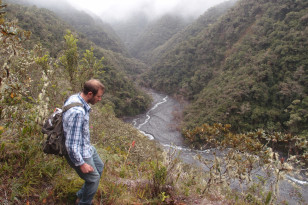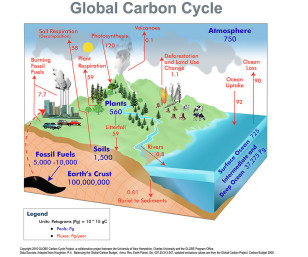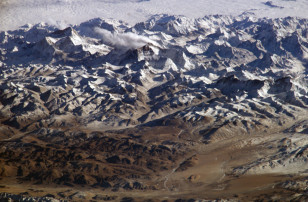A new hypothesis explains why Earth has remained habitable despite natural events that have robbed other planets in our solar system of their ability to host and sustain life.
As the character Goldilocks exclaimed in the classic fairytale, The Story of the Three Bears, Earth is the one planet in our solar system that’s “just right” to maintain the ideal conditions for life to exist, unlike, for example, Mars that’s “too cold” or Venus that’s “too hot.”
Researchers gathered documented evidence to support their new theory said that one reason Earth has stayed livable is because of the various geologic cycles it’s gone through over millions of years and continues to undergo today.
The scientists, from the University of Southern California in Los Angeles and Nanjing University in China, write in the journal Nature that they have found that the geologic cycles — which alternately release and then absorb atmospheric carbon dioxide — act as a form of climate control to keep Earth in balance.

1912 Illustration of Goldilocks running from the three bears – from the fairytale (Wikimedia Commons)
Scientists already understood that new or “fresh” rock pushed up through the Earth’s surface when the world’s mountains formed, acting as sort of a sponge, soaking up carbon dioxide, a common greenhouse gas.
However, researchers also noted that if this process of absorbing greenhouse gas continued unabated without any kind of cut-off switch, levels of atmospheric CO2 levels would have been drained to a level that would have caused the Earth to fall into an endless winter a few million years after major mountain ranges such as the Himalayas began to form. Fortunately for all of us, this unrestrained absorption of atmospheric carbon dioxide did not take place.
Researchers involved with this study said that the same fresh rock that served as a sponge to soak up CO2 also produced carbon through a chemical weathering process which replenishes the atmospheric carbon dioxide at a similar rate.
“Our presence on Earth is dependent upon this carbon cycle. This is why life is able to survive,” said the Mark Torres, from USC, lead author of the study.
The researchers studied samples of rock taken from the Andes Mountains in Peru. They noticed an abundance of pyrite or “fool’s gold” among the samples and noted that the chemical breakdown of pyrite produces acids that in turn release CO2 from surrounding minerals.
They realized the fresh rock’s weathering processes, aided by the acid release by surrounding pyrite, produced more carbon than was estimated previously. This led researchers to consider the worldwide consequences of CO2 release brought on by the formation of major mountain ranges about 60 million years ago during the Cenozoic period.
To further explore the link between releases of atmospheric CO2 from weathering rock the researchers looked at marine records of long-term carbon cycles.

Researcher Josh West treks through a valley in Peru in search of evidence of chemical weathering of rocks as they erode. (Mark Torres)
With this information, they were then able to reconstruct the balance between the discharge of CO2 into the atmosphere and absorption of the greenhouse gas from the production of fresh rocks brought on by the uplift of the Earth’s surface during the formation of large mountain ranges.
They found that weathering rock might have played a rather significant, but until now, unseen role in regulating the amount of carbon dioxide released into the atmosphere over the last 60 or so million years.
Lately, a lot of attention has focused on the harm caused to Earth’s climate by increased human-generated atmospheric carbon dioxide, but the researchers who conducted the US/China study say Earth’s natural geologic system has kept things in balance for millions of years.























Comments are closed.